Yardage books have quite the history at Augusta National… greens books do not
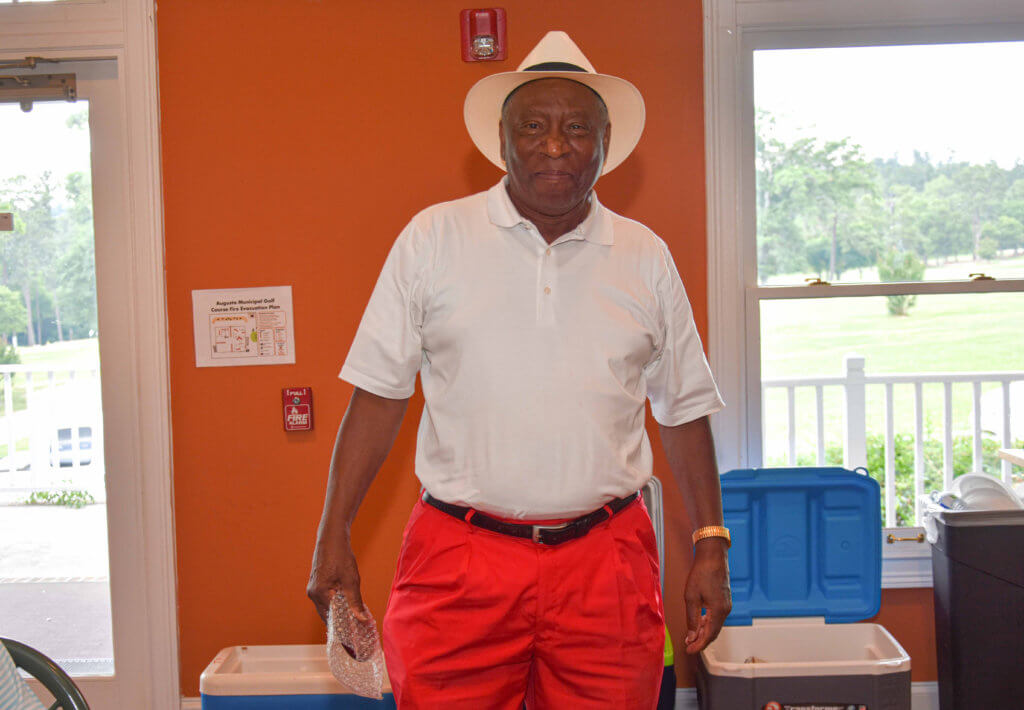
A year ago, there was a casual ceremony in inner-city Augusta to remember Jack Nicklaus’s late Masters Tournament caddie, Willie Peterson, as a marker was installed 21 years after his death at his final resting place in Cedar Grove Cemetery. The Golf Channel was there, with Willie’s daughter Vanessa present and Nicklaus tuning in electronically to offer his thoughts for a video that was to air later on the rare occasion of a fall Masters.
Notable attendees included a handful of former Augusta National caddies, chief among those being Jariah “Jerry” Beard, the caddie for Fuzzy Zoeller in the 1979 Masters victory.
Now is an appropriate time to hear the advice of this band of all-Black Augusta National caddies who developed intelligence about one of the world’s most famous courses, particularly the perplexing green complexes. Therefore, here’s a history lesson as to why there’s a hullabaloo about recent news where greens books won’t be allowed beginning in January on professional circuits, even though Augusta National has never allowed the highly detailed green maps, and “to return to a position where players and caddies use only their skill, judgment and feel” on greens, according to a PGA Tour memo.
RELATED: Restrictions coming to yardage and greens books for PGA Tour players, caddies
“When I first started caddying (in the 1950s), we didn’t use yardages, we used our head and our eyes,” Beard, 80, said. “It was an art back in those days. There weren’t any markers in the fairways or anywhere. You marked yourself with a tree, top of a bunker, that type of stuff. We called it judging distance. There was a lot of memory involved.”
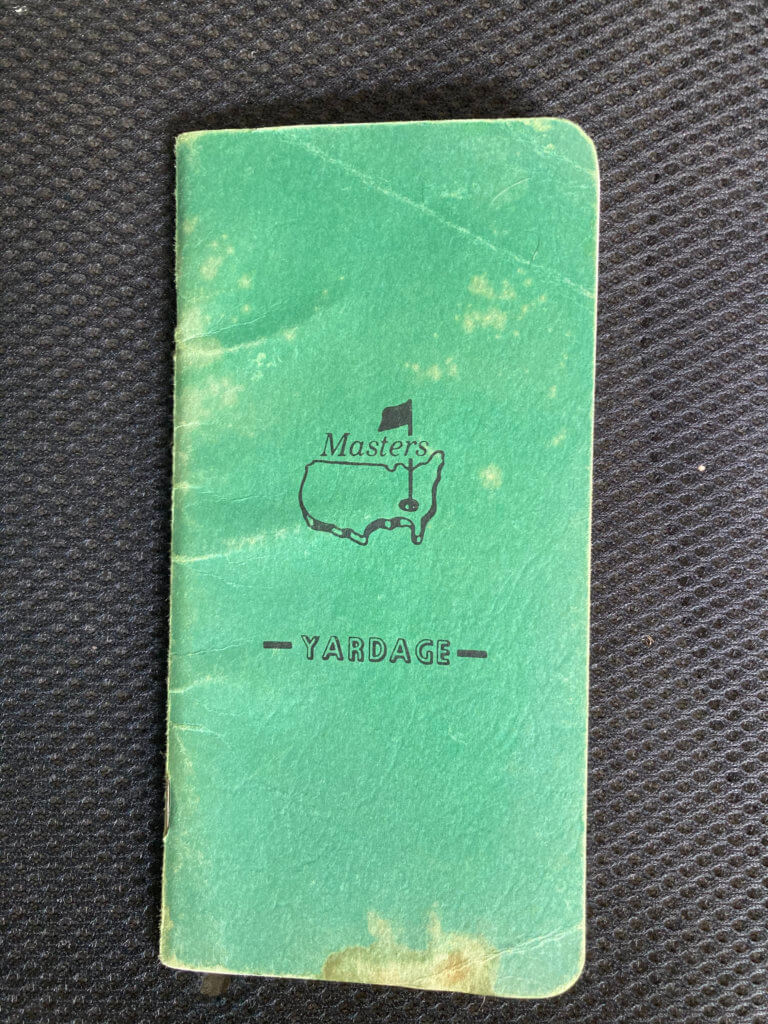
Beard learned the green-reading skill alongside brethren such as Peterson, Carl Jackson and Nathaniel “Ironman” Avery from the godfather of all Augusta National caddies, Willie “Pappy” Stokes. Stokes’ family resided on the Augusta National property when Bobby Jones and Clifford Roberts discovered the rolling land to build Jones’ dream course. In helping workers prepare the course by carrying water buckets as a pre-teen, Stokes saw how rainfall flowed down to Rae’s Creek and the shaping of green complexes by plows. He learned that just about everything breaks toward Rae’s Creek behind the 11th green, the lowest point on the property, and won five Masters, including twice with Ben Hogan.
Beard recalled that in the 1960s and 1970s during regular member play, Augusta National caddies would often hand drivers to their players for the next tee shot and then putt on the previous green to better understand the subtleties and even wager on the best reads and made putts, a practice often defended by Augusta National Chairman Clifford Roberts.
“A member questioned us about putting one day and Mr. Roberts said, ‘Well, how in the hell do you think he can learn to read them?’ ” Beard recalled.
Yardage books were the product of Arnold Palmer and Jack Nicklaus in the 1960s.
In 1963, the Golden Bear had a small notebook jammed in his back pocket. He was believed to be the first player to use such a system in a major championship.
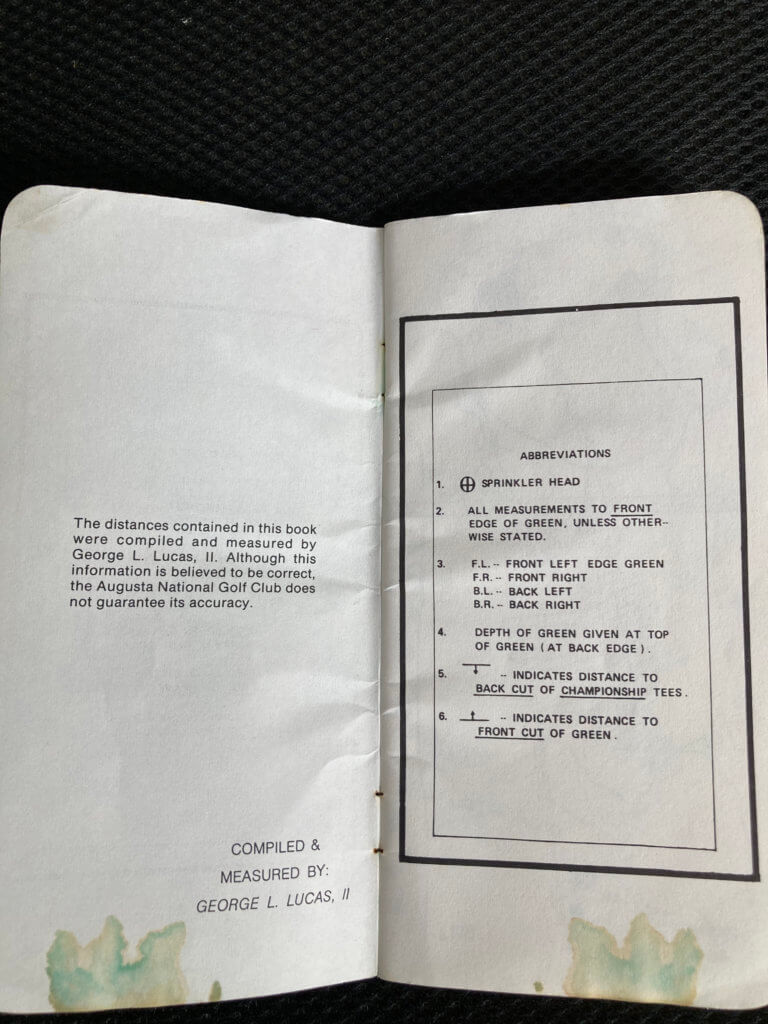
Using a scorecard circa the mid-1960s, Palmer trimmed pages from a yellow legal pad and stapled them inside the scorecard to build his own Augusta National yardage book. Each hole was drawn in ink with greens, bunkers and notable yardage markings, including penciled-in math on a couple holes. Cori Britt, the Vice President at Arnold Palmer Enterprises and a longtime friend of Palmer’s, discovered the yardage book while searching through a cabinet in Palmer’s Orlando, Fla., office in mid-March 2017, six months after Palmer’s death, and the artifact was on display at the 2018 Masters along with lots of other Palmer memorabilia.
When Augusta National first allowed outside caddies for the 1983 Masters, yardage books were available for the first time. Previously, caddies used rudimentary yardage guides that were prepared by the superintendent or checked a diagram of the hole location for that day that had been placed on each tee box. “Gorjus” George Lucas, a former PGA Tour caddie and experienced course surveyor, was hired by the club to visit Augusta National and precisely measure the course to devise his creative, hand-drawn, wallet-sized yardage guide.
Lucas was a caddie for many players, including Palmer, from the early 1970s until the early 1980s. He earned his nickname in the 1970s when Lanny Wadkins’ caddie, with whom he was roommates on the road, noticed the large supply of toiletry items that George was carrying in his suitcase and dubbed him “Gorgeous” after the famous professional wrestler. Lucas shortened the moniker to “Gorjus” to fit on a vanity license plate. Lucas’ calling of creating yardage books began in 1976 and became a trademark on the PGA Tour – and continues today by other caddie sources – as caddies were provided with more and more guidance as they prepared their players.
Lucas met with Augusta National Chairman Hord Hardin to review the process. Lucas used a wire cable early on and added a laser gun and reflective prisms in later years for the thousands of courses he measured in more than 25 years on the job. He did not charge for his initial Augusta National services “because it would have been like charging to go to church,” he said.
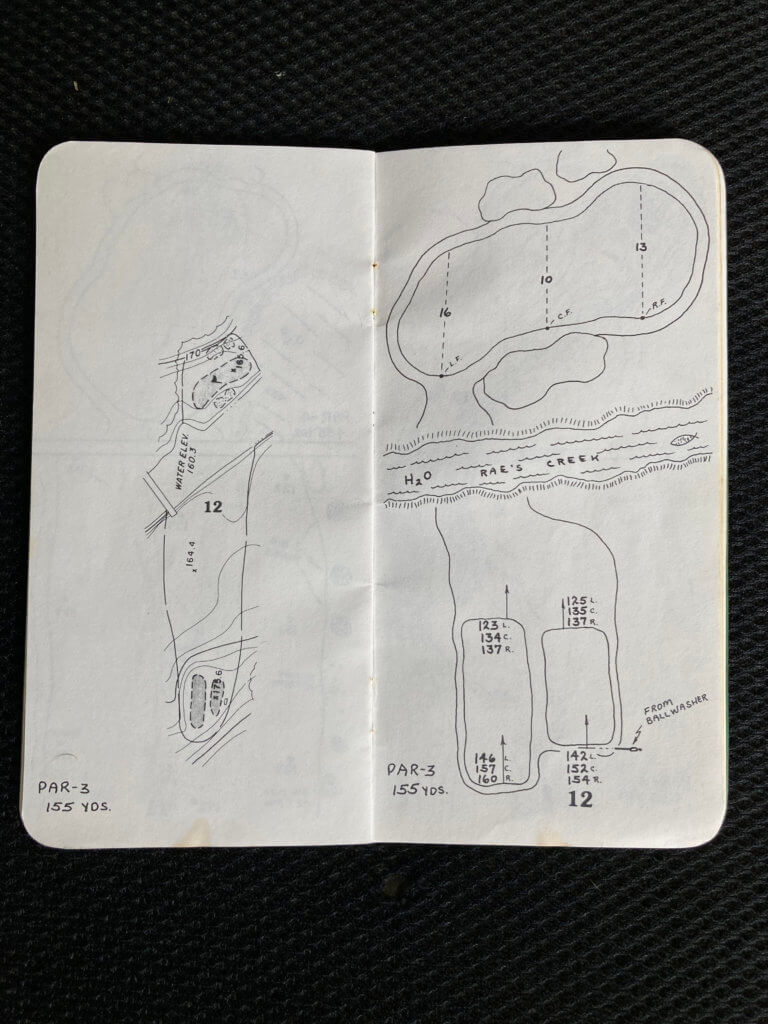
Lucas’ books gave exact distances from various spots on the holes, utilizing the usual places such as sprinkler heads and trees and the unusual landmarks such as abrupt changes in elevation to enable caddies to calculate distances. He also denoted the depth and rolls in the greens and added the subtle, humorous references such as “J.I.C.” (Just In Case) for odd positions on the course, “Grand Daddy Choco-Drop” for mounding in the 15th fairway and “H2O” with a fish figure for water hazards.
One of the first books, with the standard green cover including the Masters logo and “YARDAGE” in block letters, gave this attribution to Lucas inside the front cover: “The distances contained in this book were compiled and measured by George L. Lucas II. Although the information is believed to be correct, the Augusta National Golf Club does not guarantee its accuracy.”
When asked about the current state of information available to caddies, Beard frowns at the green details.
“In my day, if you couldn’t read the greens, you were no good to the player,” Beard said. “That green reading book – I hate that thing. That’s taking away from the best greens readers. You’re making everybody even with you.
“Who’s the fastest track runner? Usain Bolt. That green reading book, that’s like giving everybody who ran against him a 10-yard head start.”




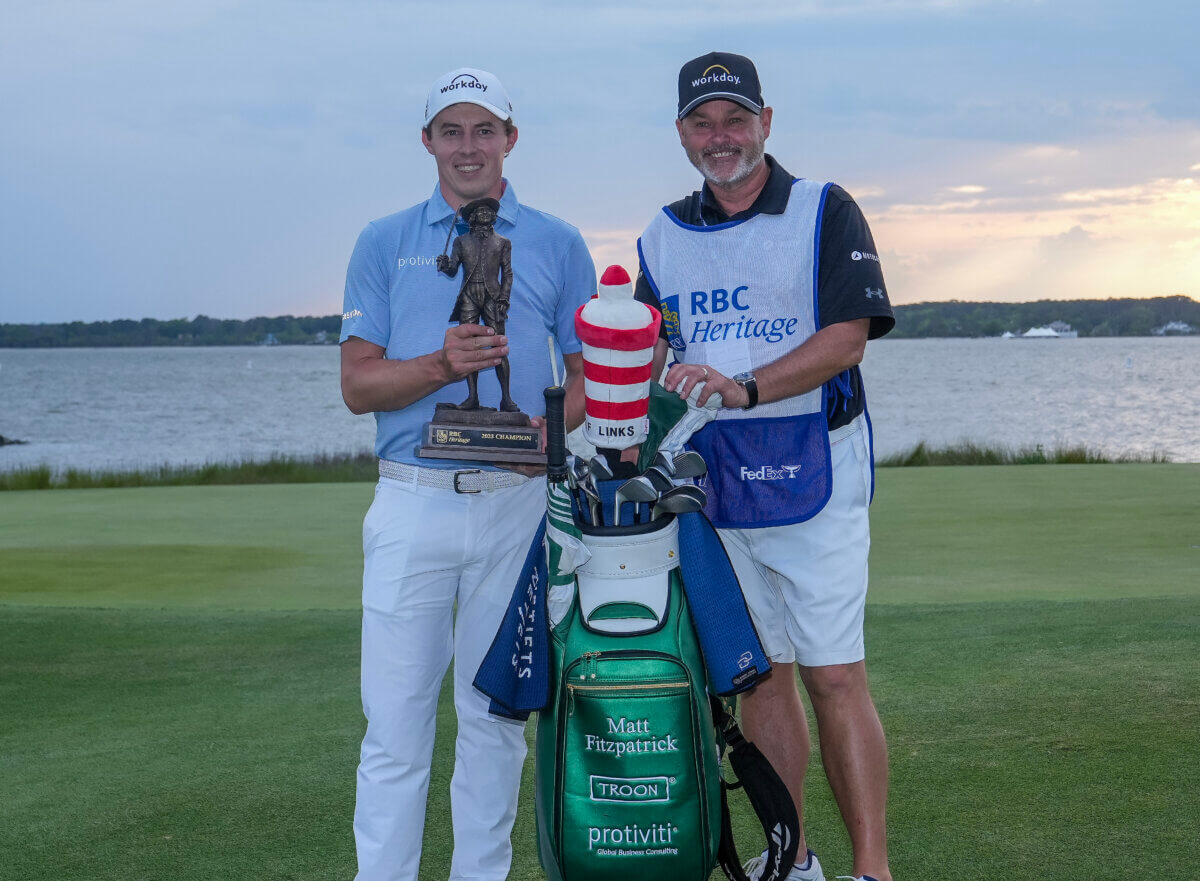


I caddied on the LPGA tour in the late 60’s – early 70’s. Sharron Moran was one to the first players to compile extensive yardage books. She introduced me to the value of of this tool. The only markers on the course were 150 yard bushes in the rough on each hole. They were approximately 150 yards to somewhere? By the mid 70’s most American caddies spent hours measuring the golf course and recording their own yardages. When I first caddied in England (1975), there were no caddies that had yardage books. Quite the opposite, it was believed that only veteran caddies could select clubs – based on experience and local knowledge.
Great article, Ward. I caddied starting in U.S. Open in 1976 at Atlanta Athletic When Pate won. A heady intro, no doubt at age 13. Gorjus books came on strong in late 70’s. Caddied at Atlanta CC , Byron Nelson at Las Colinas , Colonial, Kemper , Memphis and countless 36 hole days at U.S. open qualifiers. Went to Augusta with my Pops as a youngster. What amazing memories of toting the sticks for many fine players.